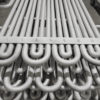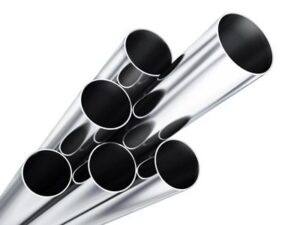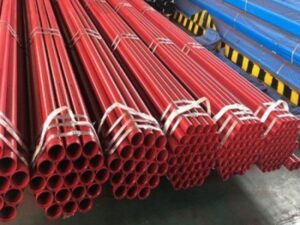Description
The Unsung Heroes of Power: Understanding Boiler Tubes
Boiler tubes: they might not be the flashiest component in a power plant, but they are undoubtedly among the most crucial. These seemingly simple tubes play a vital role in converting water into steam, the driving force behind electricity generation in many industries. Without them, the efficient and reliable production of power as we know it would be impossible.
This article dives into the world of boiler tubes, exploring their function, the challenges they face, and the innovations that keep them vital for modern power generation.
At the Heart of Steam Generation:
The primary function of boiler tubes is to transfer heat from a heat source (typically burning fuel or nuclear reactions) to water. Think of them as the arteries and veins of a boiler, circulating water throughout the system while simultaneously absorbing energy and transforming it into high-pressure steam. This steam is then channeled to turbines, which spin generators and produce electricity.
Boiler tubes are found in various configurations, tailored to the specific needs of the boiler and the type of fuel being used. These configurations include:
- Water-wall Tubes: Lining the furnace walls, these tubes absorb radiant heat from the combustion process.
- Superheater Tubes: Situated in the hottest parts of the boiler, these tubes further heat the steam to extremely high temperatures, increasing turbine efficiency.
- Reheater Tubes: Employed in larger power plants, these tubes reheat partially expanded steam from the turbine to increase overall cycle efficiency.
- Economizer Tubes: Located in the flue gas path, these tubes preheat feedwater, recovering waste heat and improving boiler efficiency.
The Challenges: A Constant Battle Against the Elements:
Boiler tubes operate under immense pressure and extreme temperatures, making them susceptible to a variety of degradation mechanisms. These challenges require constant monitoring, maintenance, and material advancements:
- Creep: Prolonged exposure to high temperatures causes the metal to slowly deform and weaken over time. This is particularly critical in superheater and reheater tubes.
- Corrosion: The chemical composition of the water and the flue gas can lead to corrosion on both the internal and external surfaces of the tubes.
- Erosion: Ash particles carried in the flue gas can erode the external surfaces of the tubes, particularly in areas with high gas velocity.
- Fatigue: Cyclic temperature and pressure fluctuations can induce fatigue cracking in the tubes.
- Overheating: Localized overheating can occur due to scale buildup or poor water circulation, leading to tube rupture.
Innovation and Resilience: Keeping Boiler Tubes Running Strong:
To combat these challenges, manufacturers and researchers are constantly working to improve boiler tube design, materials, and maintenance practices. These advancements include:
- Advanced Materials: The development of high-strength, creep-resistant alloys, such as those containing chromium, molybdenum, and vanadium, allows for higher operating temperatures and pressures.
- Improved Water Treatment: Stringent water treatment practices minimize scaling and corrosion on the internal surfaces of the tubes.
- Coatings: Protective coatings, such as thermal barrier coatings and corrosion-resistant coatings, are applied to the external surfaces of the tubes to enhance their lifespan.
- Non-Destructive Testing (NDT): Regular inspections using NDT methods, such as ultrasonic testing and eddy current testing, help detect defects before they lead to failure.
- Advanced Monitoring Systems: Online monitoring systems provide real-time data on tube temperatures, pressures, and gas compositions, allowing for proactive maintenance and optimization.
The Future of Boiler Tubes:
As the world transitions towards a more sustainable energy future, boiler tubes will continue to play a vital role in both traditional and emerging power generation technologies. While the focus is shifting towards renewable energy sources, existing fossil-fuel power plants will continue to operate for decades to come, and boiler tubes will be essential for their efficient and reliable operation.
Furthermore, boiler tubes are also finding applications in concentrated solar power (CSP) plants, where they are used to transfer heat from solar collectors to the working fluid. As CSP technology continues to develop, the demand for advanced boiler tubes will likely increase.
In conclusion, boiler tubes are the unsung heroes of power generation. Their robust design and constant evolution ensure the reliable and efficient production of electricity, powering our homes, businesses, and industries. While often overlooked, their critical role in the energy landscape cannot be overstated. As energy technologies evolve, expect continued innovation in boiler tube materials and designs to meet the challenges of a changing world.













Reviews
There are no reviews yet.